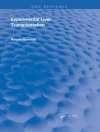Thepastdecadehasseendramaticadvances inurologyandimaging. Thesechangesareevident in improvements in laparoscopic surgery as well as in the emergence of multidetector CT, with multiplanar reformatting and FDG-PET-CT as routine imaging methods. The new minimally invasive procedures often require more exacting imaging as the surgeon does not have the same visual ?eld of view as was possible with open procedures. Thus, it is appropriate now to p- vide an update on imaging advances for the bene?t of urologists and radiologists alike. The increasing number of innovative imaging approaches to urologic tumors including CT, MRI, PET, SPECT, and endoscopic imaging can be perplexing and lead to over- and underesti- tions of the capabilities of modern imaging on the part of those who interpret them and those who use the information they provide for patient management. There is a growing “exp- tations gap” between what is expected and what is possible that needs to be closed. While previous books have focused on the more common urologic tumors such as bladder, prostate, andkidneycancer, nonehasattemptedacomprehensivereviewofthestateoftheartofimaging in most of the tumors involved in urologic oncology. Imaging in Urologic Oncology addresses these challenges. In the modern imaging department it is easy to forget how useful conventional plain rad- graphy can be in urologic diagnosis. Much of our current understanding of urologic disease is based on the “classic appearance” on intravenous urograms, cystograms, or retrograde pye- grams. Therefore, conventional imaging provides the ?rst “layer” in our understanding of u- logic tumors. The next layer is cross-sectional imaging.
สารบัญ
Adrenal Carcinoma.- Adrenal Carcinoma: Introduction.- Cross-Sectional Imaging of Adrenal Masses.- Adrenal Carcinoma – Radionuclide Imaging.- Considerations: Imaging in Adrenal Carcinoma.- Renal Cell Carinoma.- Renal Cell Carcinoma: Introduction.- Renal Cell Carcinoma: Conventional Imaging Techniques.- Cross-Sectional Imaging of Renal Cell Carcinoma.- Radionuclide Imaging in Renal Cell Carcinoma.- Considerations: Imaging in Renal Cell Carcinoma.- Urothelial Cell Carcinoma Upper Urinary Tract.- Urothelial Cell Carcinoma of the Upper Urinary Tract.- Urothelial Cell Carcinoma of the Upper Urinary Tract: Introduction.- Cross-Sectional Imaging Techniques in Transitional Cell Carcinoma of the Upper Urinary Tract.- Urothelial Cell Carcinoma in Upper Urinary Tract – Role of PET Imaging.- Considerations: Imaging in Upper Urinary Tract Urothelial Carcinoma.- Urothelial Cell Carcinoma Lower Urinary Tract.- Urothelial Carcinoma of the Lower Urinary Tract: Introduction.- Urothelial Cell Carcinoma in Lower Urinary Tract: Conventional Imaging Techniques.- Cross-Sectional Imaging of the Lower Urinary Tract.- Urothelial Cell Carcinoma in Lower Urinary Tract: Radionuclide Imaging.- Considerations: Imaging in Urothelial Cell Carcinoma of the Lower Urinary Tract.- Prostate Carcinoma.- Prostate Carcinoma: Introduction.- Prostate Carcinoma: Conventional Imaging Techniques – Gray-Scale, Color, and Power Doppler Ultrasound.- Prostate Carcinoma – Cross-Sectional Imaging Techniques.- Prostate Carcinoma: Radionuclide Imaging and PET.- Considerations: Imaging in Prostate Cancer.- Testis Carcinoma.- Testicular Carcinoma: Introduction.- Testicular Carcinoma – Conventional Imaging Techniques.- Cross-Sectional Imaging Techniques: The Use of Computed Tomography (CT) and Magnetic Resonance Imaging (MRI) in the Management of Germ Cell Tumors.- Positron Emission Tomography (PET) in Germ Cell Tumors (GCT).- Considerations: Imaging in Testis Carcinoma.- Penis Carcinoma.- Penis Carcinoma: Introduction.- Conventional Imaging in Penis Cancer.- Cross-Sectional Imaging in Penis Cancer.- Penis Carcinoma – Radionuclide Imaging and PET.- Considerations: Imaging in Penis Carcinoma.- Future Directions.- Future Directions in Urological Imaging.- Image-Guided Robotic Assisted Interventions.- Future Directions – New Developments in Ultrasound.- Future Directions – Contrast Media.- Virtual Imaging.- Optical Imaging and Diagnosis in Bladder Cancer.- Elasticity Imaging.- Future Directions.












